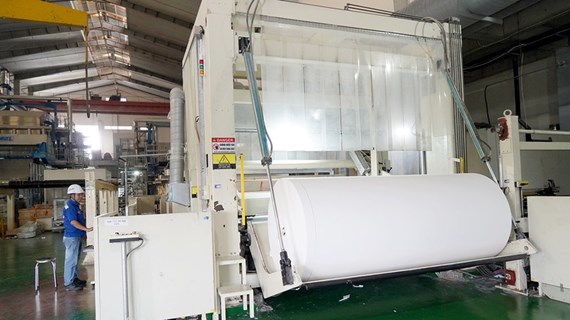Mangrove forests protect sea dykes in Quang Tri
The growing of mangrove forests in the central province of Quang Tri has proved effective in protecting the local sea dykes.
 A mangrove forest (Photo: VNA)
A mangrove forest (Photo: VNA)Quang Tri (VNA) – The growing of mangrove forests in the central province of Quang Tri has proved effective in protecting the local sea dykes.
Years ago, local residents in Trieu Phuoc commune, Trieu Phong district, could not help worrying about the sea dyke system being swept away anytime during the rainy season.
Now, everything has changed since more than 40 hectares of mangrove forests were grown around the 5km sea dyke, creating a solid belt to prevent salt water from encroaching and flood tides as well, thus protecting water resources facilities, crop fields, and ecological environment and increasing the local biodiversity.
Lying between two tributaries of the Hieu and Thach Han Rivers, Trieu Phuoc commune regularly suffers from tides and floods with a large farmland and aquatic breeding zone destroyed.
The national target programme provided nearly 20 billion VND (900,000 USD) in 2009 for the commune to reinforce the 5km sea dyke by growing mangroves along it.
Over the past seven years, the mangrove forests have brought practical benefits to local inhabitants.
Nguyen Van Thanh, a local in the commune, said the forests have saved people and rice fields from floods, adding that such model should be expanded across other areas to prevent salt water intrusion and land erosion.
The Trieu Phuoc Commune People’s Committee has organised teams to inspect the protection of forests, thus mitigating the impacts of tides and floods and improving the ecological environment.
Chairman of the committee Nguyen Vu Sy said Trieu Phuoc bears a lot of brunt from natural disasters, especially salinity.
Therefore, the mangroves growing project has helped the commune protect the ecological system and sea dyke, he added.
In October 2015, the Quang Tri department of sea, islands, and hydrometeorology implemented a project for sustainable recovery and development of mangrove forests in a bid to create sustainable livelihoods for local people in the lower part of the Ben Hai and Thach Han rivers on a total area of 63.43 hectares.
Mangrove forests develop in shallow water, such as in gulfs and estuaries sheltered by capes, narrow straits or along coasts protected by archipelagos.
Although they account for a small part of Vietnam's forests, they provide an important role in the preservation and protection of coastal and estuarine regions, habitat provision, storm protection, erosion control and carbon sequestration, according to National Agriculture Extension Centre.
Mangrove forests are present in 20 provinces and cities in the country, mostly in the south, and have diverse species.-VNA













